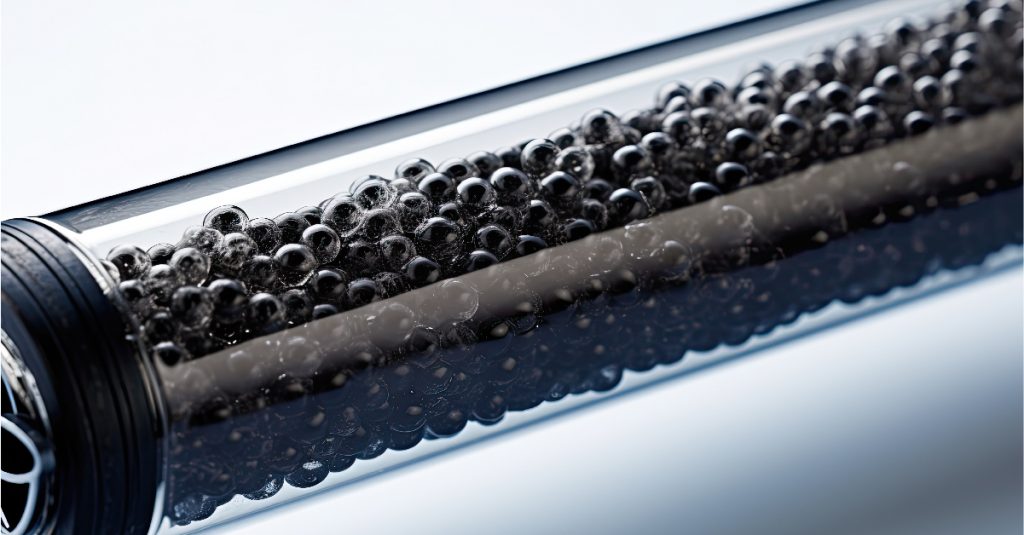Access to clean and safe drinking water remains a major concern in various parts of Indonesia, from urban cities like Jakarta and Surabaya to rural villages across the archipelago. Due to pollution, industrial discharge, and decaying infrastructure, water often contains impurities that affect its taste, safety, and overall quality. One of the most reliable and widely used technologies to address this problem is the activated carbon filter.
In this blog, we will explain how an activated carbon water filter works, explore what activated carbon filters remove from water, and examine why it’s especially valuable for households, businesses, and public utilities in Indonesia.
What is an Activated Carbon Filter?
An activated carbon filter is a water purification device that uses specially treated carbon to remove contaminants. The carbon is “activated” through high-temperature steam or chemical processing to increase its surface area and create tiny pores. These pores act like magnets, attracting and trapping various impurities as water flows through the filter.
Activated carbon water filters are commonly found in home filtration systems, water dispensers, industrial water treatment plants, and even portable water bottles in Indonesia.
What Does an Activated Carbon Filter Remove from Water?
Understanding what activated carbon filters remove from water helps highlight its importance in water purification systems, especially in a country like Indonesia, where water quality can vary significantly.
Here are the primary impurities that an activated carbon filter targets:
- Chlorine and Chlorine By-products
Municipal water in Indonesia often contains chlorine to disinfect it. While effective, chlorine can leave a strong taste and odor. Activated carbon effectively removes chlorine and improves the taste and smell of water. - Volatile Organic Compounds (VOCs)
These include industrial solvents, pesticides, and petroleum-based contaminants. In areas near industrial zones or agricultural regions, VOCs can seep into groundwater. Activated carbon traps many of these harmful substances. - Sediment and Suspended Solids
Though not as fine as a sediment filter, carbon filters can still trap visible particles like dust, rust, and sand. - Herbicides and Pesticides
Agricultural runoff in regions like Central Java or Sumatra may carry traces of chemicals into local water sources. Carbon filters help reduce these toxins. - Bad Odors and Taste
One of the most noticeable effects of using an activated carbon water filter is the improvement in the flavor and smell of water, especially when the water contains sulfur compounds or metallic tastes. - Trihalomethanes (THMs)
By-products of chlorination, THMs, are potentially harmful over long-term exposure. Activated carbon filters can significantly reduce their levels.
How Activated Carbon Filters Work?
The filtration process works mainly through two mechanisms:
- Adsorption: Contaminants are attracted to and held on the surface of the activated carbon granules or blocks.
- Catalytic Reduction: Some filters are enhanced to chemically alter certain contaminants (like chlorine or chloramine), rendering them harmless.
Depending on the design, filters may use granular activated carbon (GAC) or solid carbon blocks. Carbon blocks offer finer filtration, while GAC provides faster flow rates.
Relevance in Indonesia
1. Urban Water Safety
While city water supplies are treated, the distribution pipelines in many Indonesian cities are aging and prone to leakage and contamination. Activated carbon filters at the household level provide an additional layer of protection.
2. Rural and Rainwater Use
In many rural areas, people rely on groundwater or harvested rainwater, which may carry bacteria, organic compounds, or traces of pesticides. An activated carbon water filter helps ensure safer water for drinking and cooking.
3. Disaster Preparedness
In regions affected by flooding or volcanic activity, access to clean water can be severely limited. Portable carbon-based filters are often used by NGOs and emergency services to provide safe drinking water in such situations.
Ion Exchange Activated Carbon Filter for Efficient Water Purification
The Ion Exchange Activated Carbon Filter (ACF) is engineered for efficient removal of colour, odour, free chlorine, and organic impurities such as oil and COD from raw water. Using carbon as the filtration media, the ACF ensures high-performance purification post multi-grade filtration, operating effectively at specific flow rates of 10–24 m³/h. Designed by ASME Sec VIII, Div-I or IEI good engineering practices, the unit comes with construction options in MS, MSRL, or SS 316, and frontal pipework in PVC, MS, MSRL, or SS 316. With its ability to handle higher specific velocities and the option to use raw water for backwashing, this filter safeguards downstream systems, particularly RO membranes and ion exchange resins, against damage from oxidation and organic fouling.
Conclusion
In a country like Indonesia, where water quality varies widely depending on location and infrastructure, the activated carbon water filter plays a vital role in ensuring safer and better-tasting water. It effectively removes chlorine, VOCs, odors, and organic pollutants, making it a smart, affordable, and accessible solution for homes and industries alike.


